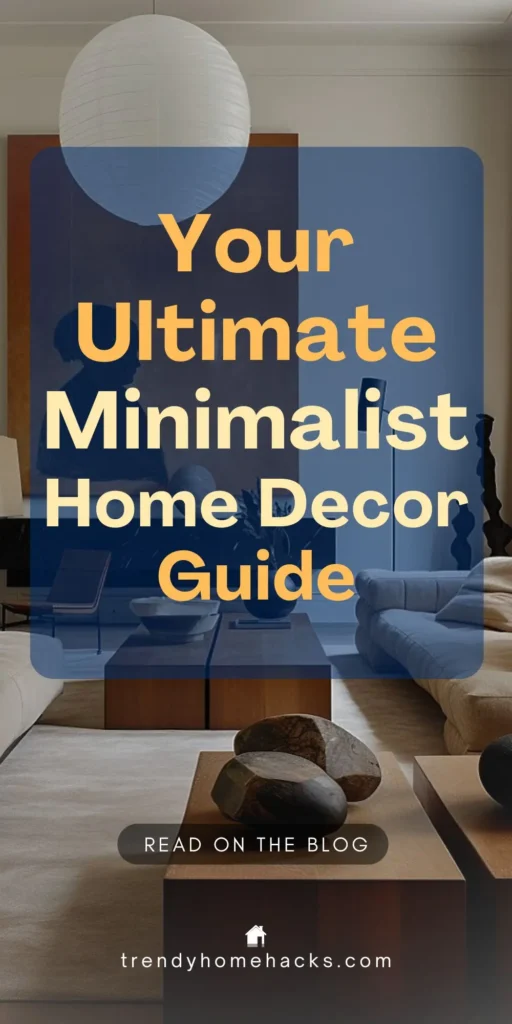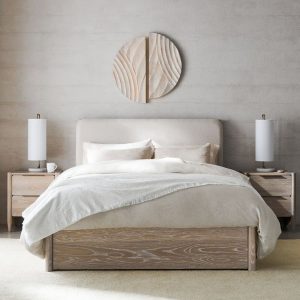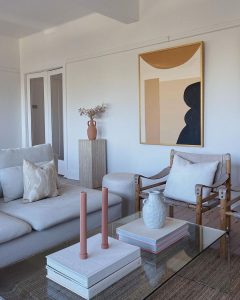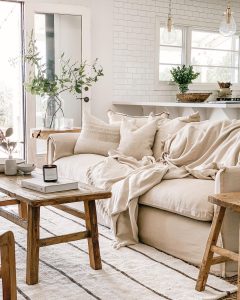Our hallway used to collect everything: coats, keys, school papers, stray shoes. One afternoon, I cleared it all out and left just a bench and a basket. That little moment sparked a bigger shift. This minimalist home decor guide really began with that space finally breathing again.
If your home’s been feeling a little too full lately, maybe you’re craving the same kind of calm. In this post, we’ll explore how less can truly be more, from calming each room to adding warmth with texture, color, and intention. No stress, no perfection. Just a peaceful home that feels like you.
What Is Minimalist Home Decor, Really?
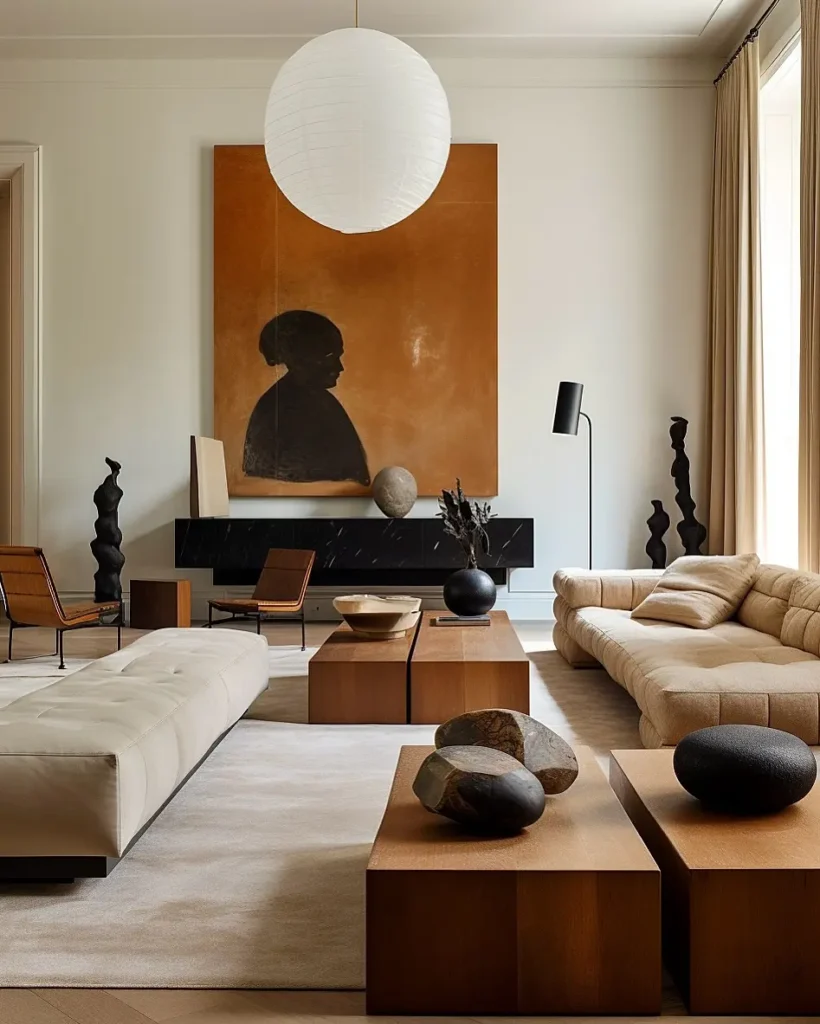
It’s easy to think minimalism means cold, empty rooms with nothing but a chair and a white wall. But that’s not the kind of minimalism we’re leaning into here. The heart of minimalist home decor is about holding onto what matters most while gently letting go of the rest.
You might see it in a quiet entryway with just a bench and a place to tuck your shoes, or a coffee table with only a candle and your current read. It’s not about doing without, it’s about creating space to breathe.
At its core, minimalist design centers around clarity. Clean lines. Open spaces. Pieces that serve a purpose and carry meaning. There’s a quiet comfort in having less to look at and more room to breathe.
When we invite minimalism into our homes, we’re really inviting in peace. We’re saying no to the pressure of more: more stuff, more noise, more chasing, and yes to spaces that help us slow down. It’s a style rooted in gratitude for what we already have and intention behind what we choose to bring in.
If you’re just starting out and wondering how to make it feel cozy and livable, try focusing on simple pieces that help you achieve a minimalist look.
Why Choose a Minimalist Home
A few years back, I realized our home was working harder than it needed to. Every corner had something in it: an accent chair we didn’t use, a lamp that gave off the wrong kind of light, baskets stuffed with who-knows-what. Clearing space didn’t just make the house feel better, it made us feel better too.
When your home has fewer distractions, your mind has fewer tabs open. It’s easier to focus on the good stuff, like family dinners, quiet mornings, or that cozy nook by the window. And there’s something powerful in the way minimalism helps create a sense of space, both physically and emotionally.
You’ll find yourself cleaning less and enjoying your space more. The freedom that comes from not having to manage so many things can feel like a fresh start every day. A minimalist home may not solve every stress, but it gives you one less place where life feels overwhelming.
Starting Fresh: A Minimalist Home Decor Guide
Before we can decorate with intention, we’ve got to clear the decks. That doesn’t mean tossing everything into a donation box and calling it done. It means slowing down and asking honest questions about what stays and why. Is it useful? Does it bring peace? Is it something I’d choose again today?
This part of the journey is less about getting rid of things and more about making space for what matters. When each piece has a reason for being there, even a simple room can feel deeply comforting.
If you’re not sure where to start, choose just one spot: a drawer, a shelf, an entry table. Clear it completely, then only return what truly serves your life today. Over time, that clarity spreads. It becomes a rhythm, not a chore. And your home starts to reflect the life you want, not the one you’ve outgrown.
Designing Each Room with Purpose
Every room in your home tells a little story about how you live. When you clear out the noise and get honest about what each space needs, something shifts. It’s not about having less for the sake of it. It’s about creating rooms that work hard, feel calm, and welcome you in at the end of the day. Let’s walk through them together.
Bedroom: Where serenity begins
The bedroom should feel like a soft landing spot at the end of a long day. That starts with clearing surfaces. No more piles of clothes on the chair or unread books on the nightstand. Keep only what you use and love. A set of cozy linens, a reading light with a soft glow, maybe one piece of artwork that makes you breathe a little deeper.
If you’re looking for a starting point, try focusing on how you want the room to feel when you wake up and when you crawl into bed. Is it restful? Is it clutter-free? These small shifts help you create a minimalist bedroom that supports both sleep and peace of mind.
Dining room: Simplicity at the table
The dining room is one of the few places where we still slow down and gather face to face. A minimalist dining room doesn’t have to feel stark or overly polished. It means thoughtful. Start with the essentials: a well-sized table, comfortable chairs, and clear surfaces that invite people to linger.
Instead of lots of seasonal decor, bring in natural elements like a linen runner or a simple ceramic vase. If you’re not sure where to begin, take a peek at the essential elements of a minimalist dining room for timeless ideas that work in any space.
And lighting matters more than you think. Warm bulbs, dimmable fixtures, or a pendant with soft curves can create the kind of mood that says, “stay awhile.” You’ll find inspiration in these examples of minimalist dining room lighting that feel both simple and special.
Living room: Where form meets function
This is the room that sees it all. Movie nights, snack trays, blanket forts, quiet afternoons. The key to a minimalist living room isn’t stripping it bare. It’s choosing things that serve your life and still look beautiful. Think low-profile seating, hidden storage, a simple rug that grounds the space.
If you’re wondering how to balance cozy with clean lines, here’s how to create a minimalist living room that’s both lived in and lovely.
And for those who love a retro twist, consider mixing in some mid-century touches. The right piece, like a walnut console or a sleek accent chair, can bring just enough personality. You’ll love the details in these mid-century modern minimalist spaces that feel both fresh and familiar.
Kitchen: A clean canvas for creativity
Minimalism shines in the kitchen, where too much stuff often means too much stress. Start by editing your surfaces. Tuck appliances away, keep counters clear, and group everyday items in pretty containers or trays. If it’s not useful or beautiful, let it go.
It’s not about having a showroom-perfect kitchen. It’s about making the space work better for you. You’ll find smart tips on how to design a minimalist kitchen that’s organized, inviting, and still full of heart.
Small and specialty spaces
Those tiny corners, like the hallway drop zone, the space beside the bed, or the nursery, deserve the same care as the bigger rooms. In small areas, every piece has to pull its weight. Choose furniture that works double duty and don’t be afraid to leave a little breathing room.
Side tables are a great place to start. Whether you need a spot for your coffee mug or a place to stash books, here’s how to transform small spaces with minimalist side tables that are both lovely and useful.
And if you’re expecting, simplicity can be a gift in the nursery too. Gentle textures, soft lighting, and just the essentials make for a calming space. This guide to creating a minimalist bohemian nursery brings that dreamy feeling to life.
Common Mistakes to Avoid in Minimalist Decorating
It’s easy to get excited about minimalism and go all in, but sometimes that enthusiasm leads to a space that feels more bare than balanced. One of the biggest misconceptions is that minimal equals cold or sterile. But minimalism isn’t about emptiness, it’s about intention.
If you’re paring things back, don’t forget to add comfort through soft textures and cozy lighting. In fact, layering a calming color palette is one of the best ways to keep a minimalist space from feeling flat.
Another common misstep? Buying all new pieces in the name of starting fresh. But minimalist decorating is more about honoring what you already own and making thoughtful edits. Instead of replacing a piece, try giving it a second life with purpose. Maybe it just needs a new coat of paint, a different home within your space, or a simpler way to let it shine.
And remember, perfection isn’t the goal. A minimalist home should feel lived in, not staged. There’s beauty in the imperfect and peace in the in-between.
A Minimalist Home Decor Guide for Seasonal Shifts
As the seasons change, so do the rhythms of home. Winter tends to bring more layers, more warmth, and often, more stuff. But even in the coziest months, minimalism still has a place. It just shifts with the mood.
One of my favorite tricks is to swap heavy accents for soft, layered textures that feel seasonal but not cluttered. Think natural greenery, simple candles, and a throw or two in winter whites or muted earth tones. For a beautiful example of this, check out how to create a chic winter decor scheme that keeps things clean and cozy.
If you’re hosting a holiday dinner or just want a little seasonal sparkle, you don’t need to go overboard. A pared-back table with a thoughtful centerpiece can feel just as magical. For easy ideas that feel festive without fuss, try these tips on how to style a simplified winter table decor.
Minimalism during the holidays isn’t about saying no to joy. It’s about making room for it.
Blending Styles the Minimalist Way
Minimalism doesn’t mean your home has to fit in a single box. In fact, blending styles can make minimalist spaces feel warmer, more personal, and more lived in. It’s all about choosing what adds meaning and letting go of what doesn’t.
If you’re drawn to cozy, grounded interiors, you might find that minimalist Japandi decor hits the sweet spot. It combines Scandinavian simplicity with Japanese warmth. Clean lines meet natural textures in the most peaceful way.
For something with more architectural character, look to mid-century modern minimalism. Those classic shapes, natural woods, and wide open layouts bring a nostalgic charm while staying true to minimalist roots.
And if your heart leans farmhouse, don’t worry. You can still enjoy that breezy, lived-in style without the clutter. The key is editing carefully. This guide to coastal farmhouse minimalism shows how to keep things light and airy without losing personality.
The beauty is, your home can tell your story, simply.
Using Color and Texture in a Minimalist Home
Minimalism doesn’t have to mean an all-white room. In fact, working with a limited color palette can make your space feel more thoughtful, not less inviting. Soft earth tones, warm grays, and muted greens all add depth without shouting for attention.
One of the easiest ways to begin is by choosing one calming base color and building from there. You’ll find helpful inspiration in this guide on how to craft a calming minimalist color palette that supports a peaceful home.
And while color sets the tone, texture brings it to life. Try mixing linen with woven baskets, or pairing smooth wood with soft wool. A little variety in texture adds visual warmth without adding clutter.
The goal is a space that feels layered and grounded, like it’s been collected over time, not curated in one afternoon.
Conclusion: Beauty Through Simplicity
A minimalist home isn’t built in a weekend. It’s shaped slowly, one thoughtful choice at a time. It grows as you do, shifting with the seasons and settling into what matters most.
Whether you’re clearing out a single shelf or reimagining an entire room, remember this: simplicity isn’t about doing without. It’s about making space for what brings peace, comfort, and joy.
So start small, trust your instincts, and let your home reflect the quiet beauty of your everyday life.
Frequently Asked Questions about Minimalist Home Decor
How do I maintain a minimalist space with kids?
It’s definitely possible, even with little ones in the mix. The key is creating clear zones for play, storage, and rest. Baskets, labeled bins, and low shelves make it easy for kids to help keep things tidy. Choose fewer toys and rotate them often to keep interest high and clutter low. And don’t stress about a perfectly picked-up house. Minimalism with kids is more about intention than perfection.
Do I have to get rid of everything to be minimalist?
Not at all. Minimalism isn’t about living with the bare minimum. It’s about choosing what truly serves you and letting go of the rest. That might mean keeping a cozy chair you love or holding onto family keepsakes that make you smile. The goal is to feel calm in your space, not to follow a set of rigid rules.
Pin this guide to your favorite minimalist decor board for when your home needs a reset and your life needs a little less!
